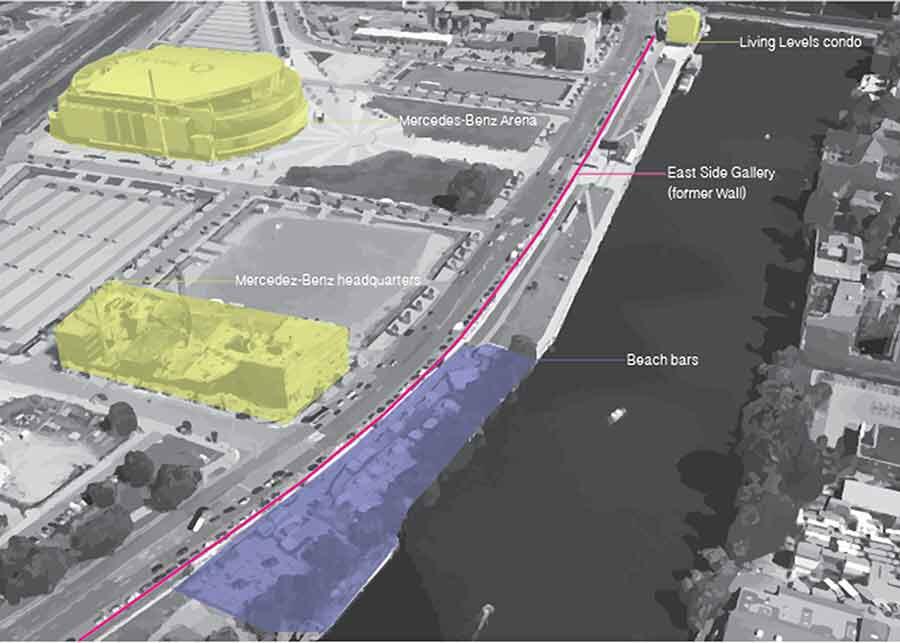
Instructor:
Course: Reconceptualizing the Urban: Berlin as Laboratory
Students: Laurel Schwab
This project investigates the role of the River Spree in the continual formation of Berlin’s urban identity over time. Water is necessary for urban life. It is also a key element of identity for those whose lives and cities are shaped by it. As Peter Coates writes in his Story of Six Rivers, “rivers nurture us and other creatures, provide us with opportunities, confront us with dangers, and inform our cultural life.” Centuries ago, the dual towns of Berlin and Cölln were founded along the banks of the River Spree precisely because of the river’s power to sustain life through sustenance, trade, and protection. Today, the River Spree fulfills multiple roles in Berlin: it is a regional economic force, an infrastructural presence, a pathway, a divider, a real estate amenity, and a place of recreation. It has fulfilled all of those roles at different points in time, and often more than one at once.
These themes and competing roles are examined in-depth as they have played out on a particular site in central Berlin: the riverbanks between the Schillingbrücke and the Oberbaumbrücke, in the Friedrichshain–Kreuzberg district. This site has been host to numerous activities and built forms since the city’s founding— a trade checkpoint and a riverine bathing destination during the industrial revolution, a murderous border during the Cold War, a hotbed of informality, and a highly contested real estate opportunity since the fall of the Wall. The creation of an intense urban void after reunification lent particular ferocity to the current contestations around the future of the river.
The height of the use and value of the Spree occurred in the 19th century, but fell to almost nothing for most of the 20th. During that time its role as a border eclipsed all other possibilities, thus Berlin’s attachment to its river lay dormant for decades. Today, multiple factions have recognized the immense potential of the voids leftover from industry and the Cold War, including city officials, real estate speculators, average citizens, and forthright activists. All are vying for the river to be used in a growing number of ways, perhaps reaching the largest number of roles it has ever been asked to play simultaneously. This is the source of the contestation surrounding the river’s future. The manifold physical and psychological evolutions that have taken place in the built space of the riverbanks and Berliners’ relationship to those spaces have culminated in a fierce battle for the right to the river that is unique to Berlin and that seems to be poised to continue for years into the future.



